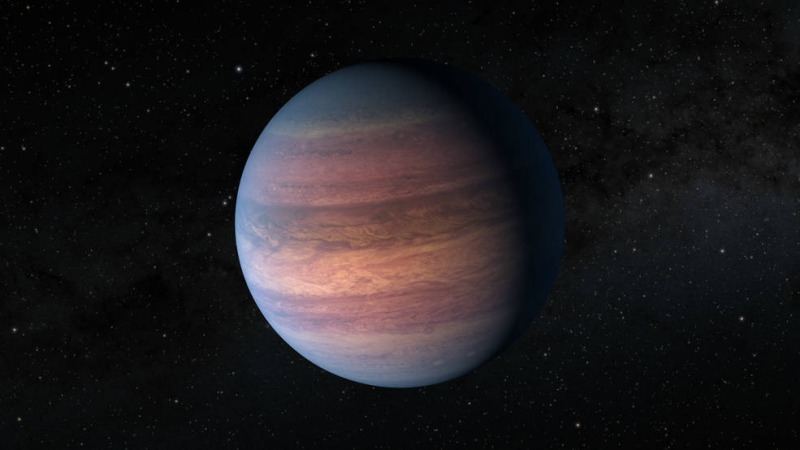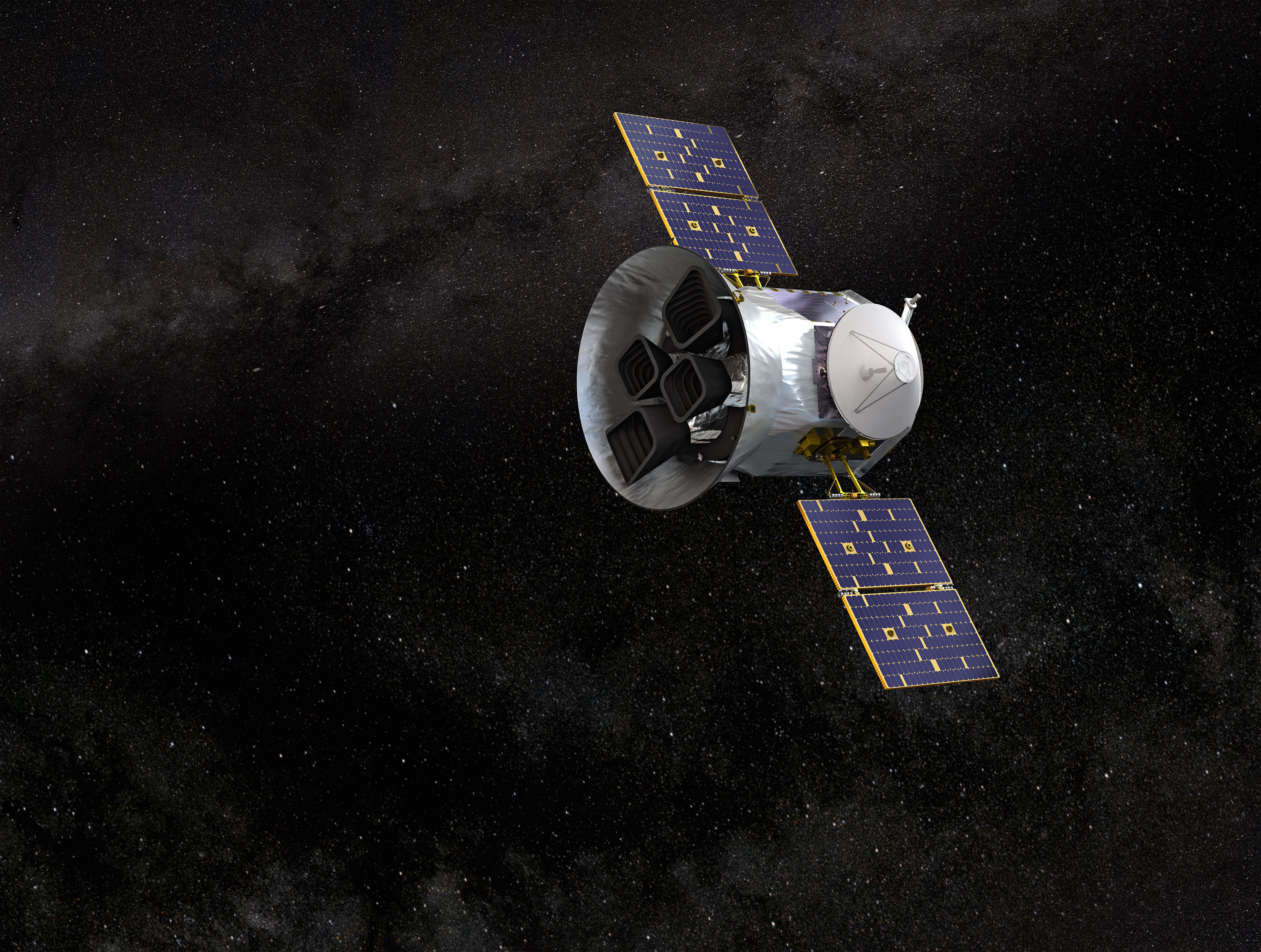Strange and hidden Jupiter-size exoplanet spotted by astronomers and citizen scientists
If orbital calculations are right, they'll see the planet again in February.

A group of astronomers and citizen scientists has uncovered a hidden planet the size of Jupiter in a distant solar system, and they should get the chance to see it again soon.
The planet, designated TOI-2180 b, is relatively close to us here on Earth, at only 379 light-years away. But what makes this world special among the sample of known giant exoplanets is that it takes a whopping 261 days to orbit its host star, much longer than most gas giants discovered outside of our solar neighborhood.
The team spotted the world using data gathered by NASA's Transiting Exoplanet Survey Satellite, or TESS. TESS spots exoplanets by finding very small and repeatable dips in a star's brightness that are caused by a planet blocking a little bit of the star's light as it transits, or passes between the spacecraft and the star. While TOI-2180 b's orbital period is not quite confirmed, scientists predict TESS will see the planet again in February.
Related: The 10 biggest exoplanet discoveries of 2021
"Transit events ... are the best avenue to discovering cooler exoplanets," said study lead author Paul Dalba, a postdoctoral researcher at the University of California Riverside, during a news conference discussing the discovery at the American Astronomical Society's 239th meeting on Thursday (Jan. 13).
Dalba described it as "cool" not only because of how unique the exoplanet is, but also because of its lower temperature caused by its longer-period orbit around its parent star. (The presentation is available in the video below, starting around the 34-minute mark.)
"There's a lot of science motivation," behind studying long-orbit exoplanets, Dalba added. "We can ask questions like, 'Do short and long orbit exoplanets form differently or evolve differently? How do they change over time?'"
Get the Space.com Newsletter
Breaking space news, the latest updates on rocket launches, skywatching events and more!
TOI-2180 b is roughly the same size as Jupiter. But it's almost three times more massive; the planet contains roughly 105 Earth masses' worth of elements heavier than hydrogen and helium, according to a release issued by the University of New Mexico, the home institution of discovery team member Diana Dragomir. This density difference could indicate that the planet formed differently from Jupiter.
Another oddity is the planet's temperature, which averages a surprisingly mild 170 degrees Fahrenheit (77 degrees Celsius). While TOI-2180 b is warmer than Jupiter and Saturn, it's still quite chilly compared to many other huge exoplanets. (Many of the gas giant exoplanets found to date are close-orbiting "hot Jupiters," which are easier to find because they transit more often and exert a greater gravitational pull on their host stars than do planets that orbit farther away.)
"It's a nice stepping stone in between most giant exoplanets we’ve found, and then really cold Jupiter and Saturn," Dalba said in a NASA press release. This temperature difference is not yet understood, but could be further explored with observations from other observatories, like NASA's just-launched James Webb Space Telescope, investigators said.

This discovery was made by a unique team of both astronomers and citizen scientists, including former U.S. naval officer Tom Jacobs. Jacobs is a participant in Planet Hunters, a NASA-funded citizen science project run through the online platform Zooniverse that focused on data from NASA's now-retired Kepler planet-hunting spacecraft.
"Discovering and publishing TOI-2180 b was a great group effort demonstrating that professional astronomers and seasoned citizen scientists can successfully work together," Jacobs said in the same NASA release.
Together, the team of citizen scientists and astronomers examined TESS data through a collaboration dubbed the Visual Survey Group. Jacobs spotted a brightness dip in the newfound planet's parent star on Feb. 1, 2020. Since stellar brightness fluctuations can be due to other factors such as sunspots, Jacobs needed confirmation and alerted astronomers Dalba and Dragomir.
TESS saw only a single dimming of the star, but the team received more information from observations by the Automated Planet Finder Telescope at Lick Observatory in California, along with the W. M. Keck Observatory in Hawaii. These two observatories saw the gravitational "tug" of the planet on its parent star, allowing the team to zero in on its mass.
The planet's orbit remains uncertain, though. The team tried to figure it out by looking for a transit again using telescopes at 14 sites, across three continents, during August 2020.
While the collaboration produced 55 datasets in 11 days, no telescope caught the transit. But this lack of information still allowed astronomers to "put a boundary" on its orbital time, which they estimate is 261 days, NASA said.
Scientists also hope to study TOI-2180 b further to look for rings or moons, which are common among gas giants in our own solar system. Most big exoplanets discovered have been found very close to their parent stars, where the intense gravity may rip things like rings away from the planet. Since TOI-2810b is farther from its star, it may be "a fun system" in which to look for moons or rings, Dalba said in the NASA release.
A study based on the research was published Thursday (Jan. 13) in the Astronomical Journal.
Follow Elizabeth Howell on Twitter @howellspace. Follow us on Twitter @Spacedotcom and on Facebook.
Join our Space Forums to keep talking space on the latest missions, night sky and more! And if you have a news tip, correction or comment, let us know at: community@space.com.

Elizabeth Howell (she/her), Ph.D., was a staff writer in the spaceflight channel between 2022 and 2024 specializing in Canadian space news. She was contributing writer for Space.com for 10 years from 2012 to 2024. Elizabeth's reporting includes multiple exclusives with the White House, leading world coverage about a lost-and-found space tomato on the International Space Station, witnessing five human spaceflight launches on two continents, flying parabolic, working inside a spacesuit, and participating in a simulated Mars mission. Her latest book, "Why Am I Taller?" (ECW Press, 2022) is co-written with astronaut Dave Williams.









